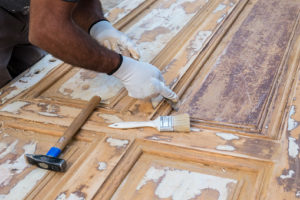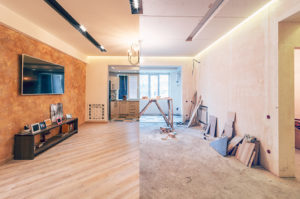As time goes on, furniture is consistently used whether at home or in an office setting. Apart from use, it also accumulates years of memory. Unfortunately, with time also comes damages that no item is immune to.
When a furniture gets damaged, it is always best to try and repair than purchasing a new piece of furniture. There are many reasons why this is so.
For starters, repairing it would bring the structural integrity to near perfect condition. It would also cost much less than purchasing a new one. It would surprise people to know that furniture repair is also the more environmentally friendly choice. The process for creating a new piece of furniture does more damage to the environment.
Finally, furniture repair is an opportunity to not only keep the structural integrity complete, but also to keep the nostalgic element intact. The memories kept with you and the times you’ve spent on your furniture would not be lost entirely.
It can keep gaining new memories and even be passed down to future generations as well.
As such, there are many things that people need to know about furniture repair. For this article, we’ll be clarifying the difference between furniture refinishing and furniture restoration.
Here is everything you need to know about furniture refinishing and restoration. By the end of it, we’ll hope you’ll understand both processes so that you know which one to do to your furniture.
Restoration vs. Refinishing
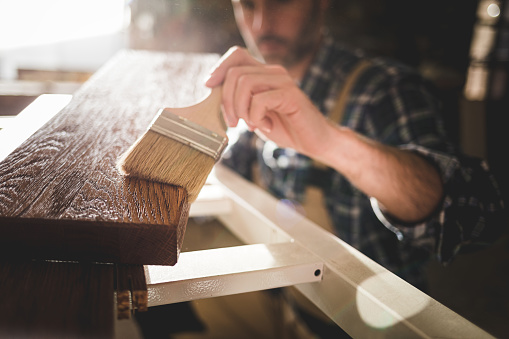
The first thing we’ll need to clarify is the difference between furniture restoration and furniture refinishing. People often clump these two terms to mean the same thing. However, they actually mean different things.
Furniture restoration is the repair of a physical part of the furniture. If you’d like, you can think about it as a process to maintain the physical and structural integrity of furniture. These can be things like repairing the legs of chairs and sofas.
This also pertains to the fixing of the cosmetic parts or general look of the furniture. This also includes the cleaning that can be done to a piece of furniture.
All these processes are generally defined as non-invasive procedures. Thus, the procedures are mostly done to the outermost appearance of the furniture. The ultimate goal is to make the piece of furniture look brand new and retain its original value.
Refinishing on the other hand is much different. As the name suggests, this is the process of reapplying the finish or outer coating of furniture that makes the surface look attractive. Apart from a certain aesthetic luster, finish also keeps away moisture and dirt. This also makes the furniture easier to clean.
Refinishing is all about stripping off the old finish of furniture, reapplying it to make it look as attractive as it was previously, and placing a new coat to keep away certain elements.
Processes for Furniture Restoration and Refinishing
So what are the processes included for both furniture restoration and refinishing?
Furniture Restoration
- Furniture Analysis
For furniture restoration, the first thing that must be done is the analysis of the damaged furniture. Furniture restorers will look at the extent of the damage and the processes necessary for its repair. This analysis will ultimately determine the next steps.
- Sanding
While the next steps are quite dynamic, there are some steps that are quite general. For starters, the furniture is sanded. This process ultimately gets rid of the old finish of the furniture. Once that is done, it can be thoroughly cleaned. The various things that have affected the furniture, like discoloration or burns, will also be addressed here.
- Repair
Then comes the repair part. This largely depends upon the piece of furniture and the damage. If it is a broken chair leg, expert craftsmen can either fix the leg or craft a new one to stick on. If there is a wicker element, some weaving work would need to be done.
An often used procedure for addressing cracks or scratches is called reamalgamation. If a surface seems dull or damaged, a solvent is applied to the surface in order to do away with those damages.
The repairing part also takes care of all metal parts that need to be replaced. These include things like nuts, screws, joining blocks, and more.
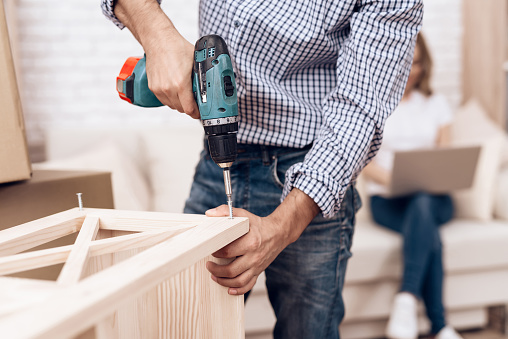
Furniture Refinishing
The final step comes furniture refinishing. Included in the furniture restoration procedure was the stripping off of the finish. Now, it is time to put it back. You can select from oils, waxes, or certain other finishes.
The key here is understanding the material that you are working with. While these finishes can be applied to different materials, the different types of wood have their own set of characteristics.
Mahogany, for example, requires it being grain-filled. This will ensure that the finish is even throughout the piece of furniture. Bear in mind though that this takes a lot of time to do.
Maple is a hardwood. As such, there is a specific way to refinish it. For maple, the wood must be pre-conditioned. After this happens, you can then put on the stain to have an even color at the end of the process. The pre-conditioning allows for the maple to avoid blemishes from the stain.
There are a ton of resources out there for the many types of finishes that you can apply and how to do it. However, there are certain pieces of furniture where it is best left to the experts.
DIY vs. Experts
These days, furniture restoration and refinishing is a new hobby that many people can easily get into. The question though is whether you should do it yourself or leave it to the professionals.
If you have the knowledge and skills to restore and refinish the furniture, then by all means take a crack at it. This is obviously quite cheaper than going to the professionals. However, you’ll need to understand the various tools you need to use, as well as the methods and finishes for each material.
As said, this is also a great hobby to do. It is certainly an activity that you can do to pass the time. It is also a new skill to learn.
The tricky part here is if the piece of furniture is an antique or if it is very valuable to you. This means that there are really no room for mistakes. This can put a lot of pressure on the person doing it.
This is where the experts and professionals come in to play. With experts, for a few extra bucks, you won’t need to stress yourself with the various methods, techniques, sourcing parts, and solutions. Check out our blog on What to Look For When Looking for the Best Furniture Restoration Company to help you find the right one.
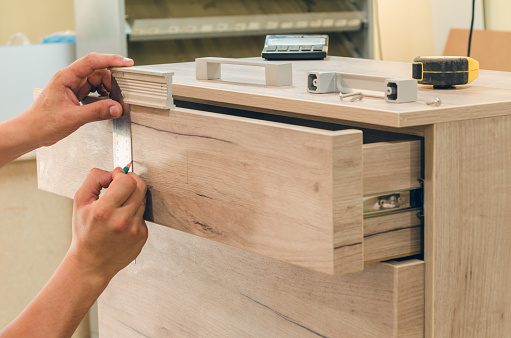
You can rest easy knowing that your furniture is in good hands and they’ll take good care of it. All you really have to do is come back to get your furniture.
These experts have years of experience under their belt. They understand what it takes to repair and refinish your furniture. They will also have available to them all the parts and materials that they’ll need.
With their knowledge, you won’t have to worry about them ruining your furniture. It is always a good idea to take your furniture to the experts.
Just to give you an idea and prepare you for the costs, furniture restoration cost range would be anywhere between $100 to $500. For furniture refinishing, the range is anywhere from $300 to $800.
Take Care of your Furniture
We hope that you now understand the key differences between furniture restoration and refinishing. We also hope that when the time comes, you’ll know what procedure to do for your furniture.
Take care of your furniture so that you can continue using it and make memories for it. Furniture is a vital and often overlooked part of people’s lives, so it is always important to take care of it.
You might also wanna check Top Tips in Giving Your Business Facility a Refreshed Look.

